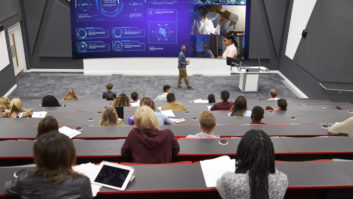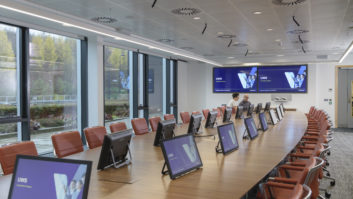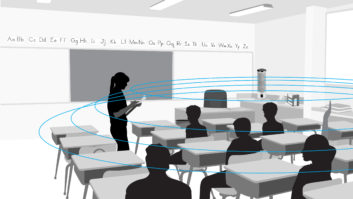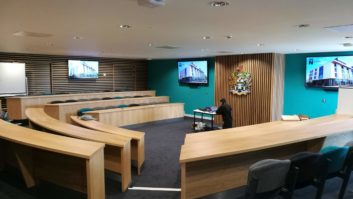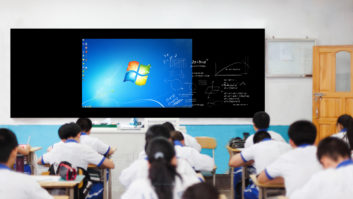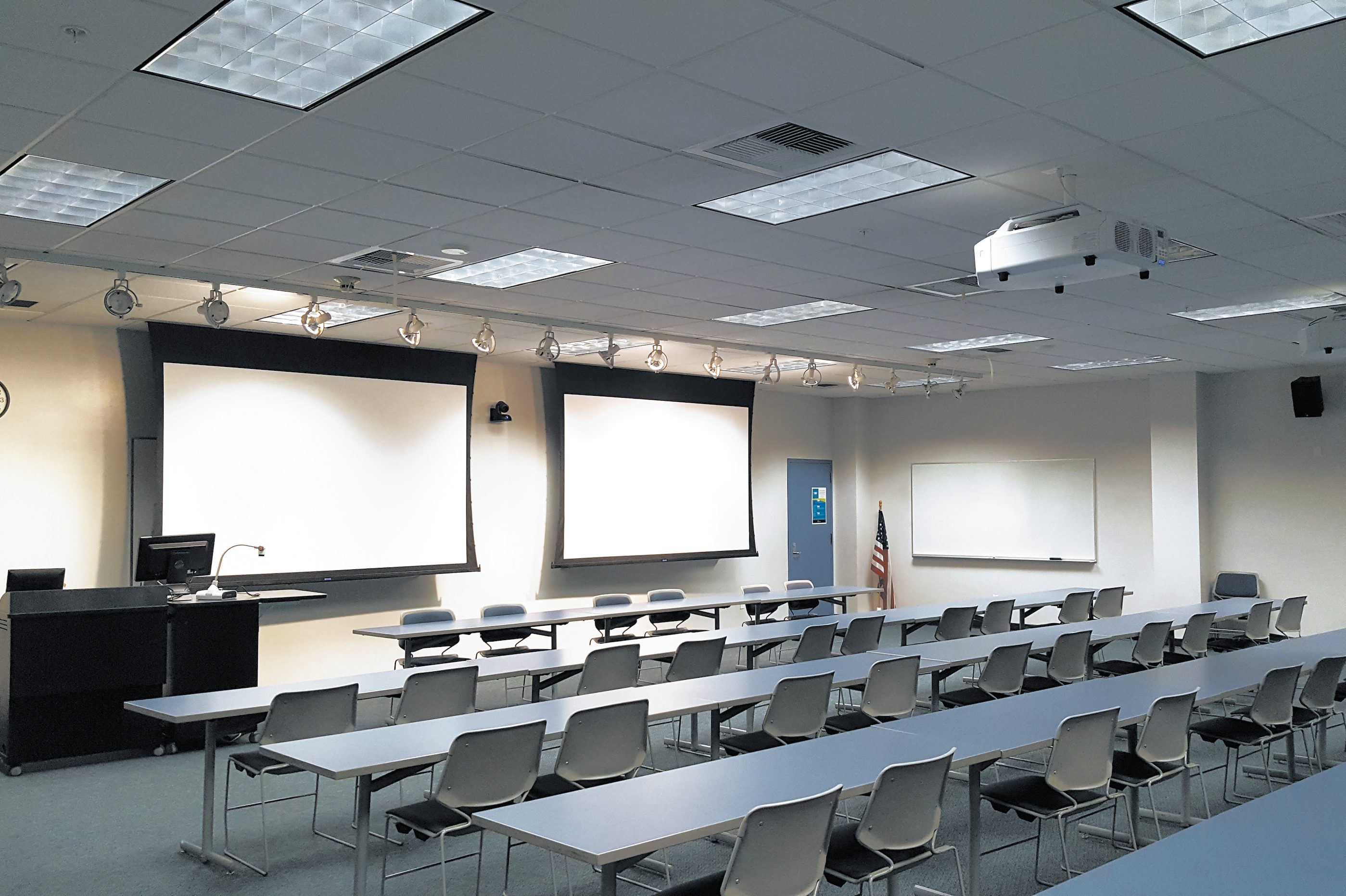
Michael Burns investigates how AV over IP is being implemented across a number of different verticals, starting with corporate.
AV over IP is an evolution in media transport. Why use multiple different types of cables to carry video, audio, reference, metadata and control data, when a single standard network cable passing through conventional network switches will do the job?
It may seem like a no-brainer for simplifying AV, but not so long ago some AV professionals were fearing a loss of responsibility and a degradation in media quality and security if they moved more towards standard internet-based solutions. IT professionals on the other hand felt in danger of being overwhelmed by challenges of supporting and managing the integration of live video and audio (and their users) into their network infrastructure.
Those days are gone, according to Michael Crisci, business development manager AV/IP and strategic alliances, Atlona. “The uptake of AVoIP is on the rise,” he says. “Solutions are addressing IT-specific needs like network redundancy, AES encryption and forward error correction within the AV environment. The fears of IT and AV convergence have passed.”
“As more traditional AV applications become IP connected, so too do traditional AV products,” says Rainer Stiehl, vice president of marketing, Europe, Extron Electronics. “Many customers are interested in leveraging their data network as the transport infrastructure for AV in addition to their business-class data like email, file transfer, and voice over IP. There are some unique capabilities and potential benefits when streaming video and audio information over the network, such as scalability, reach and flexibility.”
Big business
“AVoIP’s expandability and scalability are undoubtedly huge advantages over legacy technology using a classic video matrix,” agrees Tom Strade, technology & innovation VP, Black Box. “It took some time for network administrators to accept the integration of AV on their networks but AVoIP is well established nowadays.”
AVoIP applications in the corporate space addressed by Strade’s company include providing signage across multiple displays in large halls or meeting rooms. “Physical distance is also not a problem anymore – using AVoIP, your AV reaches as far as your network reaches,” he says. “Using our mediacento IPX in conjunction with our Coalesce Wireless collaboration system, you could share and work on a single presentation across multiple floors using AVoIP.”
“Corporate facilities are a melting pot of AV environments that all work with AVoIP technology,” observes Crisci. “Atlona’s redundant capabilities and ultra-low-latency solutions work well in meeting spaces from huddle spaces to large conference rooms, creating interconnected virtual matrixes.”
Mark Stanborough, sales manager, EMEA & APAC, Cabletime, reveals that his corporate customers, such as Bloomberg, PwC and KPMG, have been using AVoIP solutions to distribute live TV and digital signage over existing IP networks all over their buildings. This will not suit all levels of customers, though.
“The installation of a broadcast-style service, or fit-for-purpose digital signage in a corporate environment, is a big undertaking for any organisation, and the technical barriers can seem daunting,” he says. “Integrators specifying solutions have to establish whether the network infrastructure can cope. The IPTV network must be capable of sustaining bandwidth-intense, high-availability multicast transport streams carried in the standard MPEG2 transport stream across multiple subnets, vLANs and WANs. Without this in place, the system will not perform to maximum capacity.”
Aurora Multimedia has a long-standing interest in this sector. “Aurora was the first company to ever combine Dante with AV over IP to allow breakout of the audio for mixing, or to not have to de-embed the audio into analogue,” says CEO Paul Harris. “This allows for more powerful room combining.”
“For corporate facilities, Aurora not only created a transceiver box unit but we also created wall plates, which are necessary in corporate environments,” he adds. “Our products are not your typical AV over IP, as we change the overall topology of AV with our transceiver concept and the mixing of standards, which we call IPBaseT. We have opened up new capabilities never utilised till now. For example we can reverse the direction of the video or audio in the system.”
Harris echoes Stanborough’s concerns about bandwidth. “The demand from these applications is growing,” he says. “In turn, it means that there could be less bandwidth available for other applications, which can be problematic. Expanding your network to meet this demand can be costly, so it’s also important to further reduce bandwidth usage without impacting latency. We have a new encoder due out shortly that will reduce latency when encoding AV sources to send over IP.”
Security is a critical factor when looking into AVoIP solutions in this sector, particularly when employees can easily hook up their own devices to a wired or wireless IP network.
“The stakes are now higher,” says Stijn Ooms, EMEA product director at Crestron. “Sensitive content like executive presentations or HR employment and salary information is now accessible anywhere there’s a network drop. Rogue devices can access protected content. As a result, anything that goes on the network must be secure, and clients need to know who and what is on their network. Crestron DM NVX Series sets the standard by leveraging the most advanced network security technologies like AES content encryption, 802.1x authentication and active directory credential management.”
www.atlona.com
www.auroramultimedia.com
www.blackbox.co.uk
www.crestron.eu
www.extron.com

